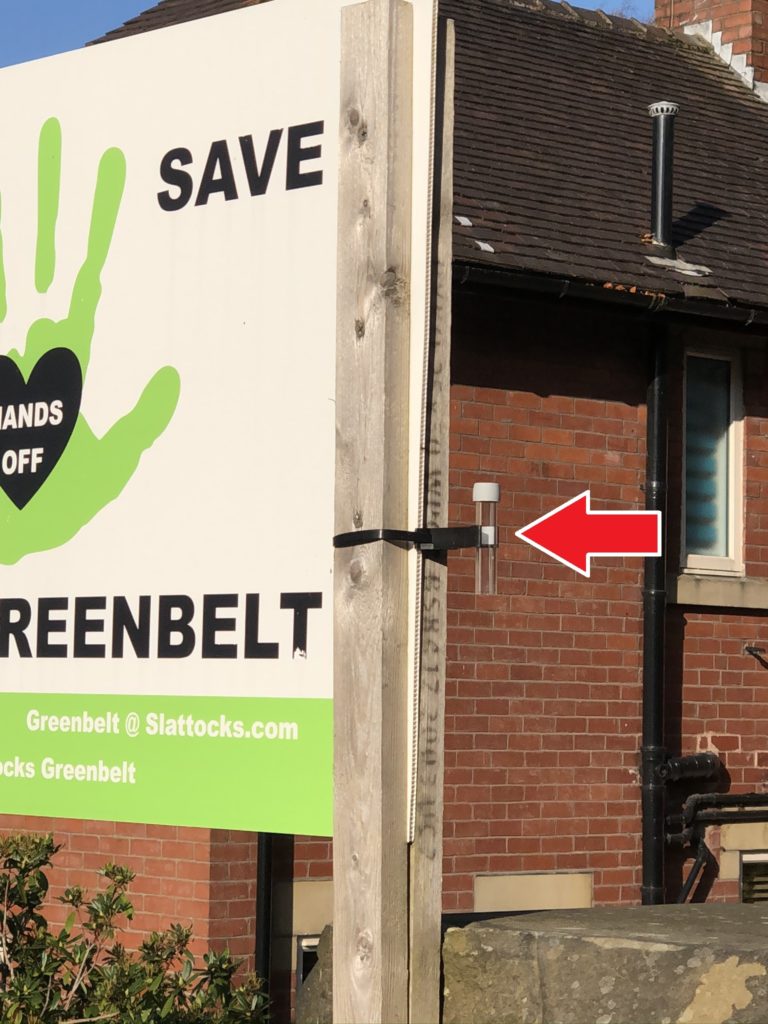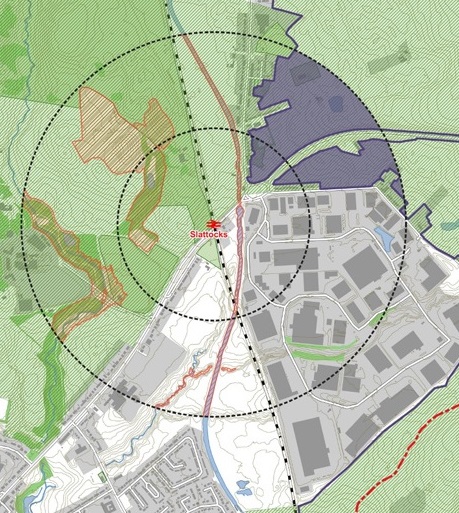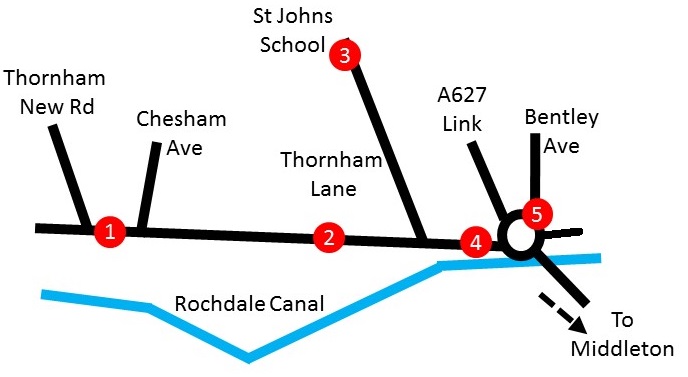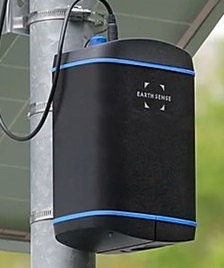James Walsh (@MancunianBirder)
“We need to alert people, especially the decision makers, to the true scale of the biodiversity emergency in Greater Manchester.
2021, the first year of the United Nations Decade on Ecosystem Restoration, should be the year that we start to understand and act on what we need to do to improve the environment.”
James Walsh, Greater Manchester Birding City Region (GMBCR) Project
At COP26 there is a greater emphasis on nature and the biodiversity emergency. It is time that Greater Manchester recognised this shift. We can’t even begin to understand what a world-leading Green City Region should look like until we recognise BOTH the climate emergency AND the biodiversity emergency, and the amount of extra resources and investment we require to start to address both emergencies.
The recently published Greater Manchester Bird Report 2012 provides compelling evidence for Greater Manchester to declare a biodiversity emergency, in the new United Nations Decade on Ecosystem Restoration 2021-2030.
The Turtle Dove is already an extinct species in Greater Manchester, and there are many species on the brink.
Now that Greater Manchester has the ambition to be a world-leading Green City Region, we need to inform people about the biodiversity emergency at every opportunity.
BIRD SPECIES OF HIGH LEVEL CONSERVATION CONCERN IN GREATER MANCHESTER
I have highlighted from the Bird Report twenty five bird species of high level conservation concern, quotes from the report in italics and personal comments are in speech marks.
The species are Northern Pochard, Grey Partridge, Hen Harrier, Northern Lapwing, Little Ringed Plover, Eurasian Curlew, Cuckoo, Short-eared Owl, Swift, Lesser Spotted Woodpecker, Kestrel, Willow Tit, Skylark, Wood Warbler, Starling, Spotted Flycatcher, Pied Flycatcher, Redstart, Whinchat, House Sparrow, Tree Sparrow, Tree Pipit, Twite, Yellowhammer and Corn Bunting. Note that this isn’t a full list of the birds with declining populations.
1. NORTHERN POCHARD (Aythya ferina)
Climate change is thought to be the primary cause for the 55% decline in UK Wetlands and Estuary Bird Surveys between 1986/87 and 2011/12 (Holt et al 2013), with many now wintering closer to their breeding grounds. In early winter, the most apparent decline occurred at Chorlton Water Park where counts were down 63% compared to 2011.
“I recall a time in the 1990s when thousands of Northern Pochard were present on Chorlton Water Park in the winter, and as recently as 2007 I recorded two breeding pairs on small urban lakes in Altrincham, south Trafford. Now, any sighting is very noteworthy, and sightings of flocks of more than ten is a real cause for celebration.”
Drake Northern Pochard, Pomona, Salford Docklands
Northern Pochards, Chorlton Water Park
Northern Pochards on Salford Docklands
2. GREY PARTRIDGE (Perdix perdix)
“Grey Partridge actually had a reasonable year in 2012, however, the long-term trends for this species at a national and local level suggest population decline. My personal observation of this species is I have had just one sighting of this species in Greater Manchester in two years of ecological surveys cycling thousands of miles around the city region. And I have looked at a lot of fields.”
3. HEN HARRIER (Circus cyaneus)
Notwithstanding the bleak news regarding the Hen Harriers lack of breeding success in neighbouring Lancashire, and elsewhere in England, reported sightings were slightly up on the year 2011 and followed the usual pattern of one or two spring appearances with an autumn peak in October.
“It is telling that I have never seen a Hen Harrier in Greater Manchester, in 30+ years of birding. The magnificent Hen Harrier is the subject of a high-profile national campaign and Greater Manchester, with potentially quality breeding sites and wintering sites for this species, can play its’ part in the recovery of this amazing raptor. If we really look after the Hen Harriers’ habitats, we look after the Red Grouse too.”
4. NORTHERN LAPWING (Vanellus vanellus)
It is sobering to look back at the 2002 County Report and note that 6 sites had flocks of 500+ birds. Just 41% of our county’s Breeding Bird Survey (BBS) squares recorded Lapwings, compared with 39% last year – an insignificant increase after 3 years of decline. The national population index, derived from BBS counts, showed a continuation of the species’ relentless misfortunes and the North-West breeding population has now fallen 35% since the start of BBS in 1995.
“My main personal observations of this species are from Salford Quays, where I estimate the breeding population to be c20 pairs in the 1990s. In 2021 that was down to just one breeding pair, on the Manchester Ship Canal, just to the west of The Lowry, the venue for the Greater Manchester Green Summit 2021.
Dave Steel’s data on Northern Lapwings on the Salford mosses would give great insight into the species population changes.
Interestingly, this species can survive in industrial areas if given a chance, with adaptations such as green roofs. The Higginshaw Lane Industrial Estate in Royton seems to be one of the top autumn/winter sites for this species.”
5. LITTLE RINGED PLOVER (Charadrius dubius)
Breeding confirmed at nine sites fledging a total of ten young, probable at a further five sites and possible at a further eleven sites. These figures represent a second successive year of decline. There was however an increase in breeding at urban brownfield sites in Manchester with three pairs managing to fledge a total of eight young.
“This is another species that I have watched disappear from Salford Quays as a breeding species. I recall watching a pair of Little Ringed Plovers with three chicks on Middlewood Locks with Derek Richardson, GMEU Principal Ecologist, in 2011 and this site has now been developed. Lapwing, Little Ringed Plover, Skylark and Black Redstart are all birds that can benefit from appropriate use of brownfield sites and green roofs.”
6. EURASIAN CURLEW (Numenius arquata)
Levels of confirmed breeding declined for the second successive year.
“It is highly distressing to hear of this species’ national decline. Anyone who has ever heard this species’ highly emotive call knows how special this bird is.”
7. CUCKOO (Cuculus canorus)
The significant decline recorded on the BBS nationally was also felt in the county; with only two squares (3%) occupied representing a 50% decline from 2011.
“The familiar call of Spring and Summer is becoming a much rarer sound these days. 2021 was a year where I didn’t manage to record any Cuckoos in Greater Manchester at all, while in 2020 the only Cuckoo that I recorded was on the border with Lancashire.”
8. SHORT-EARED OWL (Asio flammeus)
Once again, breeding was not confirmed in the county, although an attempt was probably made on the Horwich Moors, but thought to have been disturbed by construction work.
“Although there were good numbers of Short-Eared Owls in Greater Manchester in the early part of the year, due to an influx, no breeding confirmed. My first memories of this species in Greater Manchester were in the urban Mersey Valley in the 1980s. Numbers that would be considered phenomenal these days were present at sites such as Chorlton Ees and Turn Moss.”
9. SWIFT (Apus apus)
Lack of coverage and effort in this post-atlas survey year saw an extremely poor breeding return… one can only hope that the situation is not as serious as it appears for this amber list species.
“We can’t just move swiftly on from the conversation about the biodiversity emergency. Reasons for the decline in Swift populations are likely to be complex, as with many of the summer migrant birds that face all sorts of challenges on their migrations to and from Africa, however, what we need to do with all the summer migrant birds is celebrate them when they do arrive in the Spring and give them a home for the Summer months.”
10. LESSER SPOTTED WOODPECKER (Dendrocopos minor)
The species maintains its tenuous foothold in the county but there were only 15 records from six sites during 2012.
“In March 2012, a drumming male on Dunham Massey, a traditional site. Is this species still present in this area ?”
11. KESTREL (Falco tinnunculus)
The loss of breeding sites, as well as hunting areas, may also be contributing to this species decline and the demolition of a mill in Oldham deprived one pair of its traditional nest site.
“At the Vernon Works Mill, High Barn Street, Royton, the pair of Kestrels looked to have just managed to fledge young prior to the old mill building being knocked down in 2021. This might be the case with other Oldham mills being demolished.”
12. WILLOW TIT (Poecile montanus)
This species continues to give cause for concern. 314 records, compared with 318 in 2011 and 358 in 2010. The west of the county remains an area of national importance for Willow Tits. The Rare Breeding Birds Panel has monitored the Willow Tit nationally since 2010. Greater Manchester Bird Recording Group sent an analysis of the county’s annual records to rbbp for inclusion in their database and publication in their report.
“In Greater Manchester we are in the business of saving the Willow Tit. It is up to us – and also Yorkshire – to save this bird from extinction.
Residents recently blessed the Willow Tit in Wigan the highest score in the “Perfect Ten Birds of Greater Manchester” public consultation survey as part of the virtual, online Manchester Festival of Nature 2021.
The Wigan Flashes – recently on Springwatch – potentially being designated an NNR – National Nature Reserve – can be positive for the Willow Tit, the official superstar bird of Greater Manchester.”
13. SKYLARK (Alauda arvensis)
“I have monitored Skylarks on Salford Docklands and have personally witnessed the population decline. In the 1990s they were plentiful, especially on North Wharf, the site of Media City. Pomona Docks then became the only site on the docklands where Skylarks held territory and attempted to breed. However, records have become scarcer. This species needs a Greater Manchester Action Plan where land-owners such as Peel can attempt to provide nesting habitat and green roofs for this amazing songster. The Skylark is the subject of “The Lark Ascending”, a quintessentially British piece of classical music and a favourite in the Classic FM Hall of Fame, that recently celebrated its 100th anniversary. The Skylark is a real indicator of the health of our green and pleasant lands.”
14. WOOD WARBLER (Phylloscopus sibilatrix)
This red-listed species has been the subject of several studies to try and understand the cause of its steep decline in recent decades in the UK. Whilst perhaps never more than a scarce bird in our lightly wooded county, let’s all hope that this really beautiful bird and distinctive songster can somehow confound our expectations and re-establish itself in our area real soon, even if just on a small scale.
“The recent singing Wood Warbler in Spring 2018 in Brookdale Park, just 3 miles to the north-east of Manchester city centre, was an amazing record and gave Manchester’s urban birders a real countryside experience as this species is more usually associated with areas such as the Peak District and mid-Wales.”
Wood Warbler, Brookdale Park, Manchester
15. STARLING (Sturnus vulgaris)
Breeding numbers in the country as a whole are falling and this fact is reflected in BBS returns with 57 squares providing sightings, and whilst the number of squares is the same as recorded in 2011, the percentage was lower, 80% compared to 86%.
“At the Green Summit 2021, a person from one of the stalls, when she discovered that I’m an ecologist, asked “where have all the birds gone from my garden?”, and this isn’t an unusual question. People who regularly watch their garden birds are sometimes scratching their heads, thinking “why am I seeing less Starlings and House Sparrows ?” Even our garden birds require conservation resources for monitoring purposes.”
16. SPOTTED FLYCATCHER (Muscicapa striata)
Breeding was only confirmed at one location in the county in 2012.
“A very scarce summer migrant. A bird I recall being much easier to see in my youth.”
17. PIED FLYCATCHER (Ficedula hypoleuca)
2012 was a very poor year for this species in the county, with no confirmed breeding and no records of any migrants during the late summer or autumn months for the first time in nine years.
“A very scarce summer migrant. This species is more associated with the Peak District and mid-Wales, but there is potential habitat for more Pied Flycatchers at higher altitude sites such as Healey Dell, Rochdale.”
18. REDSTART (Phoenicurus ochruros)
Of eight singing males, only two successfully attracted a mate but both did go on to breed successfully ; a good result for a species that continues to cling precariously onto its breeding status in the county.
“A scarce summer migrant. As with Pied Flycatcher, a bird that shares similar habitat, there is more potential habitat for this stunning species that could be utilised if the population manages to rise.”
19. WHINCHAT (Saxicola rubetra)
2012 saw one of the most significant breeding successes of recent years after a pair were confirmed to have bred in the east of the county.
“A scarce summer migrant. The Whinchat is, personally, my favourite bird in the UK. I think most birders would agree that the sight of a Whinchat, on migration at sites such as the mosslands, or on upland breeding habitat, is one that would make any birders’ day. What could Greater Manchester’s ecologists learn from the Whinchat project at Geltsdale, Cumbria ?”
Male Whinchat, Little Woolden Moss Lancashire Wildlife Trust nature reserve
Juvenile Whinchat, Pomona Docks, Salford Docklands
20. HOUSE SPARROW (Passer domesticus)
This species is in decline nationally. In Greater Manchester its distribution remains fairly stable although total numbers may be less than previously.
“It is a pity that even the humble House Sparrow is a part of the Greater Manchester biodiversity emergency. However, this does give us a big opportunity to really start to look at the ecology of this popular garden bird in more detail.”
21. TREE SPARROW (Passer montanus)
There was a huge and disappointing drop in reports for this species of considerable conservation concern.
“If the House Sparrow is doing badly, it’s countryside cousin Tree Sparrow is faring even worse. In Asia Tree Sparrows can be seen in urban areas behaving like House Sparrows! However, in the UK the Tree Sparrow is generally only found in rural areas and it is one of a number of farmland birds whose populations are declining in the UK countryside.”
22. TREE PIPIT (Anthus trivialis)
It has now been three years since the species bred in the county and one can only remain optimistic for a return of this red list species as ideal breeding habitat still remains in the county.
“Despite 30+ years of birding in Greater Manchester, I have never been fortunate enough to witness this species doing its classic “parachute” display flight on breeding territory. I’m sure Dave Steel could tell us of days when species such as Tree Pipit, Whinchat, Stonechat, Yellow Wagtail, Turtle Dove, Tree Sparrow, Yellowhammer and Corn Bunting all bred on the mosses in decent numbers.”
23. TWITE (Carduelis flavirostris)
Sadly, the number of records received for this species has now dropped to a level where it is no longer a necessity to summarise them, as they can all be mentioned individually. A total of 11 records, 7 of which were visible migration sightings on the Horwich Moors.
“A bird of the moors. I recently cycled up to Blackstone Edge, Rochdale, on a bit of a pilgrimage to pay homage to this subtle, pretty upland finch, the first time that I have managed to see this species in Greater Manchester. It was distressing to see this site knee-deep in “lockdown” litter. Luckily the Twite were in a compound area with a feeding station.”
24. YELLOWHAMMER (Emberiza citrinella)
It’s no wonder that the Yellowhammer might be wishing for a little bit of bread and no cheese when it’s got cereals for breakfast, cereals for lunch and cereals for tea! ok, so that’s a bit of artistic license in describing its dietary requirements. However, its fondness for grain is well-known and with modern farming practises being so ultra efficient in reducing the spillage available for winter stubble, whilst at the same time limiting weed growth and reducing invertebrate levels too, it perhaps explains why the yellowhammer has a restricted range and also declining numbers in our relatively built-up county.
“Once again, I would refer to Dave Steel’s amazing notes on the birds of the mosses to gain a fuller picture of this species population decline. This species would have been present on the mosslands in far greater numbers 50 years ago. It is another of the key farmland species that can encourage us towards a Greater Manchester Agricultural Plan, singing “A little bit of bread and no cheese…”
25. CORN BUNTING (Emberiza calandra)
Despite being red-listed and an original entrant in the UK Biodiversity Action Plan listing, its long-term decline has continued, albeit at a reduced rate more recently. Local extinctions across large sections of its former range in the UK have occurred. Are we about to see the same thing here ?
“It would seem that for the first year ever there are no singing or breeding Corn Buntings on the Salford mosses in 2021. This would be an absolute tragedy if it is proven to be the case. The “jangling keys” song of this farmland bird is one of the quintessential sounds of the mosses. This situation should jolt us all to action regarding the conservation of the mosslands and farmlands of Greater Manchester.”









 Image:
Image: